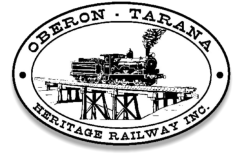Locomotives
OTHR has purchased 7307 and 7321 to provide the primary motive power on the line. One unit will be used on work trains and the other on revenue service. Each to back up the other.
OTHR has purchased 7307 and 7321 to provide the primary motive power on the line. One unit will be used on work trains and the other on revenue service. Each to back up the other.
The history of 73 Class Diesel Locos
The NSW 73 Class are diesel-hydraulic locomotives originally purchased and operated by the NSW Government Railways (NSWGR) and manufactured by Walkers of Maryborough, QLD. Between 1970 and 1973, 50 of these units were built with the first operating on NSW lines in October 1970.
In the 1960’s the NSWGR were in need of a powerful diesel shunting locomotive and following an order by QLD Railways for similar units, the NSWGR placed an order with Walkers Limited for 20 B-B units fitted with a Caterpillar 485kW diesel engine. These were the first NWGR locomotives to be built in QLD.
When the whole of the first order was delivered, these units replaced all steam shunting on the North Coast line and the Sydney Metropolitan area, as well as at Goulburn. Their presence was an immediate success and a further 30 units were ordered. The last of these arrived in March 1973 and this brought to an end all remaining steam shunting operations throughout the state. Units 7301 and 7321 were initially based at Eveleigh Depot.
The first withdrawals from service began in 1987, with most units quickly retired or sold after that time. The last owners and operators of these two diesel locos were Patrick Corp at Port Botany. OTHR purchased 7307 and 7321s from Patricks in May 2010.[/vc_column_text][vc_column_text]Specifications
- Built by: Walkers of Maryborough, QLD in 1970-1973
- Number built for NSWGR: 50
- Wheelbase: 8.08 m
- Length: 10.97 m
- Width: 2.82 m
- Heightl 4.11m
- Weight: 49.8 tonnes
- Top Speed: 65 km/hr
- Power: 650 bhp (485 kW)
- Engine: Caterpillar D379, 4 stroke, turbocharged V8 diesel.
